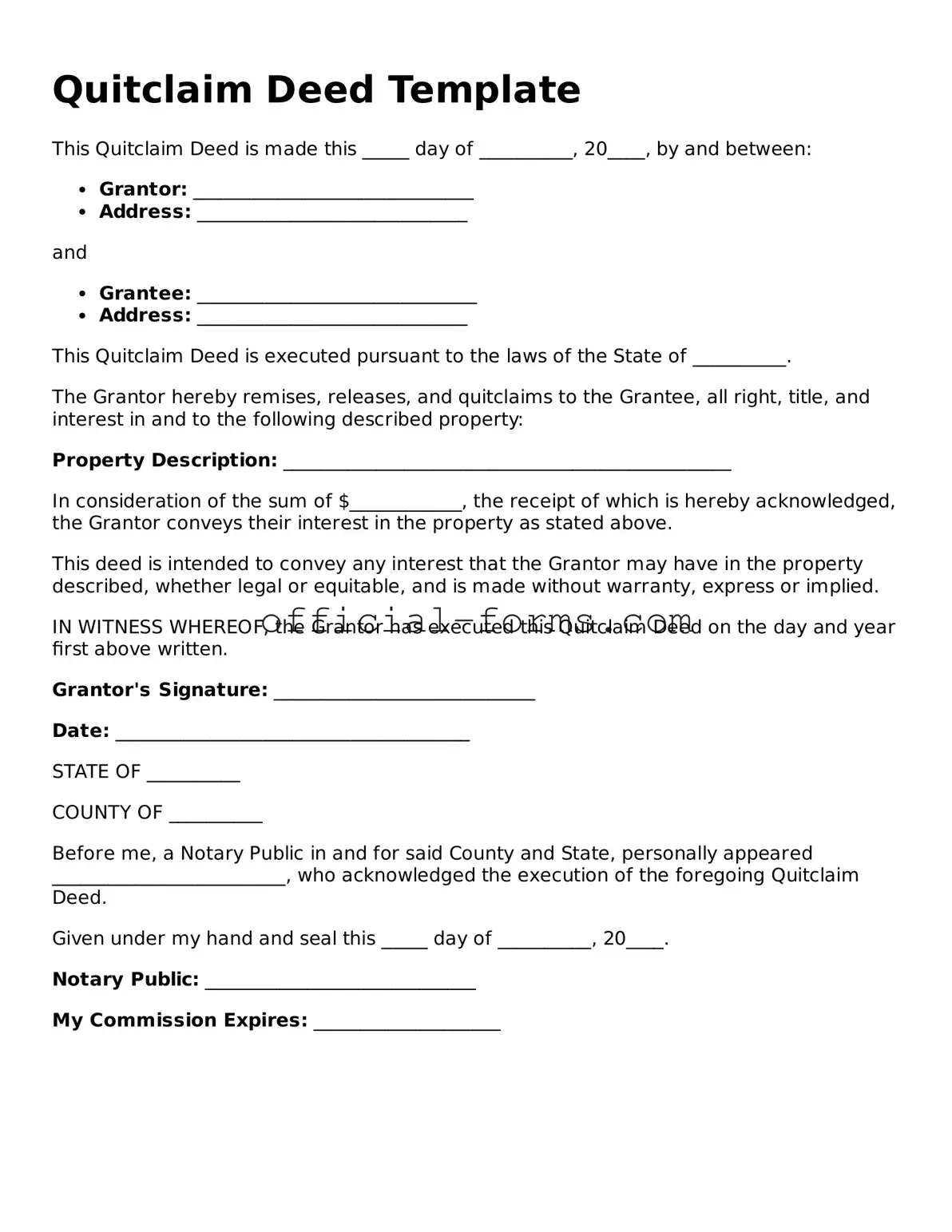Filling out a Quitclaim Deed form can be straightforward, but many individuals make common mistakes that can lead to complications later. One frequent error is failing to include the correct legal description of the property. This description should be precise and often includes details such as lot number, block number, and any relevant subdivision information. Without this, the deed may not effectively convey the intended property.
Another mistake involves incorrect or missing names of the parties involved. The grantor (the person transferring the property) and the grantee (the person receiving the property) must be clearly identified. If names are misspelled or incomplete, it can create confusion or legal disputes in the future.
People often overlook the importance of signatures. A Quitclaim Deed must be signed by the grantor, and in some cases, witnesses or a notary may also be required. Failing to obtain the necessary signatures can render the deed invalid. Additionally, individuals sometimes forget to date the document, which is crucial for establishing the timeline of the property transfer.
Another common oversight is neglecting to check local requirements. Different states and counties have specific rules regarding Quitclaim Deeds, including how they should be filed and any fees that may apply. Ignoring these local regulations can lead to delays or even rejection of the deed.
Some people mistakenly believe that a Quitclaim Deed is a substitute for a title search. While this form transfers interest in a property, it does not guarantee that the title is clear of liens or other claims. Conducting a thorough title search before completing the deed is essential to avoid future legal issues.
In addition, individuals sometimes fail to consider tax implications. Transferring property can have tax consequences, including potential gift taxes or transfer taxes. Consulting with a tax professional can help clarify any financial obligations that may arise from the transfer.
Another mistake is not retaining copies of the completed Quitclaim Deed. After filing the document with the appropriate office, it’s wise to keep a copy for personal records. This ensures that all parties have access to the deed if questions arise in the future.
Lastly, many individuals underestimate the importance of clarity in the deed’s language. Using vague terms or unclear phrases can lead to misinterpretations. It’s advisable to use straightforward language to ensure that the intent of the transfer is easily understood.
